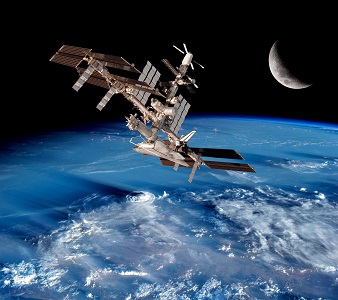On the lookout for bad space weather

date: 04/11/2015
Project: Protecting space assets from high energy...
acronym: SPACECAST
See also: CORDIS
In the hostile space environment, radiation comes mainly from the sun and from radiation belts – regions of high-energy charged particles trapped inside the Earth's magnetic field. Radiation levels are extremely variable and can change 10 000 fold or more during magnetic storms within the space of an hour or a few days.
When the number of high-energy particles increases it can charge up satellites to dangerous levels. Satellite charging can damage electronic components and lead to temporary loss of service or component failure. In extreme cases, the operator may lose the satellite for good.
Even a temporary malfunction may cost operators tens of millions of euro in revenue. And this does not even take into account the cost of design, construction and launch, which comes in at close to €300 million for a modern telecommunications satellite.
Real-time forecasts 24/7
To help operators prevent damage to their satellites, the SPACECAST consortium developed a real-time space weather forecasting system. “For the first time we can forecast radiation levels for a range of different orbits including geostationary orbit, medium Earth orbit, and the so-called slot region orbit some 8 000 km above the Earth,” explains project coordinator Richard Horne of the British Antarctic Survey.
Even better: the automatic forecast is available on the project website free of charge, 24 hours a day, seven days a week with hourly updates. Besides detailed forecasts for radiation belts of high-energy electrons, low-energy electrons and protons, the information is turned into a user-friendly index, indicating the current risk to satellites in green, amber and red.
Thanks to the system, operators can now better protect their investments: if the forecast predicts high radiation levels, they can reschedule an orbit manoeuvre or a software upgrade, for example, which reduces the risk of something going wrong. They can also have more people available to deal with any potential problems.
Praise from the users
While similar systems exist for more general applications, this is the first one catering directly to the needs of the satellite industry. “One of the satellite operators said that this is 10 times better than what is being produced elsewhere”, says Horne. “In addition to the prevention aspect, they can use our models to reconstruct the radiation environment to help identify the cause of the malfunction. Was it due to the space environment or was it due to something else? And ultimately, that information will feed back into the design process.”
Outside of the satellite industry, the system has also gone down well with insurance companies covering satellites. Severe damage to one of those feats of engineering can result in a hefty payout. As a result, they would like to ensure that operators take all reasonable precautions.
The SPACECAST system has also sparked the interest of the UK Met Office. The UK's national weather service is currently evaluating whether to incorporate the SPACECAST information into its own space weather forecasts.
A lasting legacy
From Horne's point of view, the project's lasting legacy is twofold. On one hand, the consortium improved science's understanding of space weather and how high-energy electrons inside the Earth's magnetic field are accelerated by various types of very low frequency radio waves. This knowledge can help prevent expensive damage to satellites.
On the other, SPACECAST helped build a stakeholder community. Researchers, representatives of companies as well as the European Space Agency (ESA) continue to meet and discuss common issues. They are therefore continuing to improve understanding of the problems companies encounter, while helping companies understand what is going on in research.
